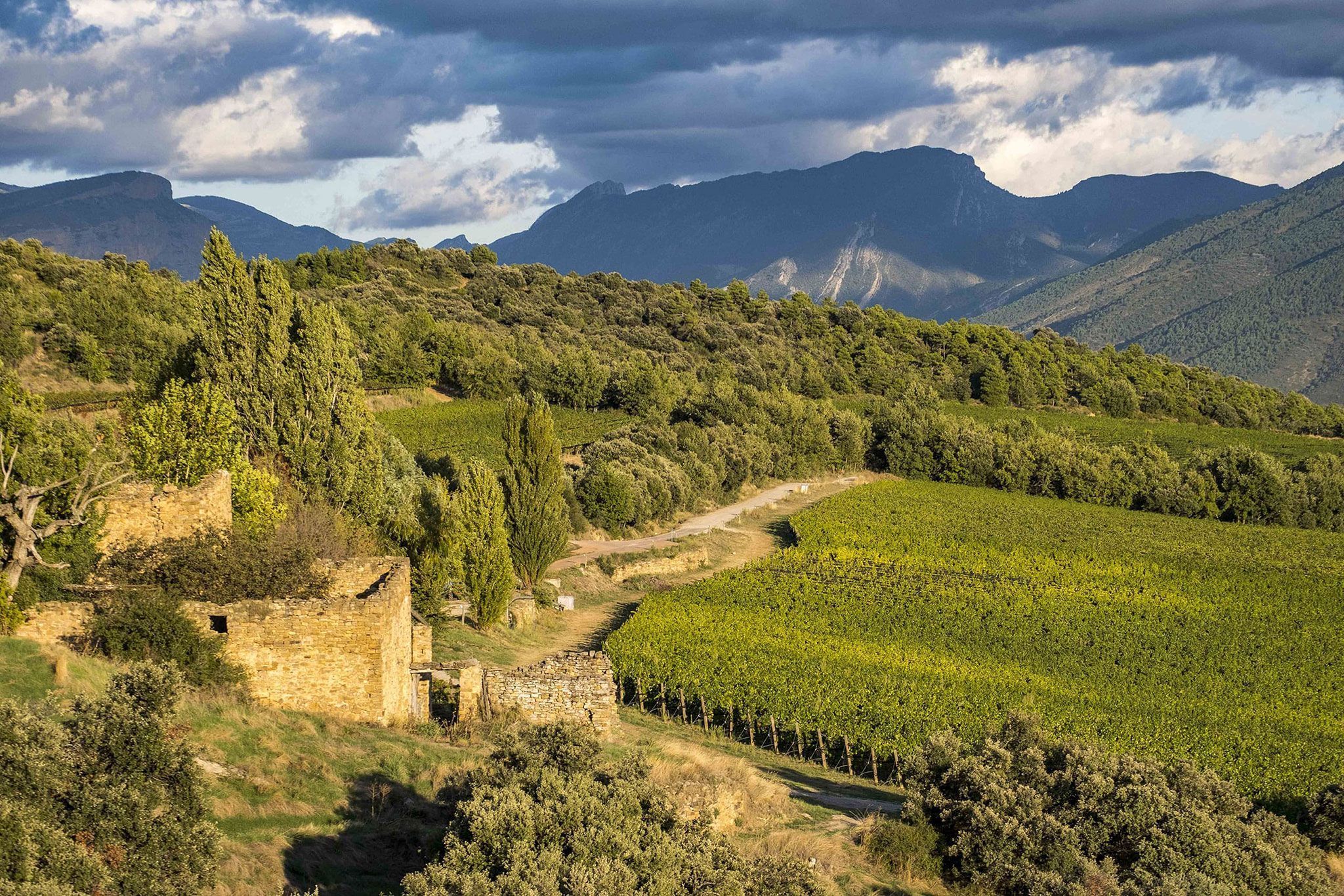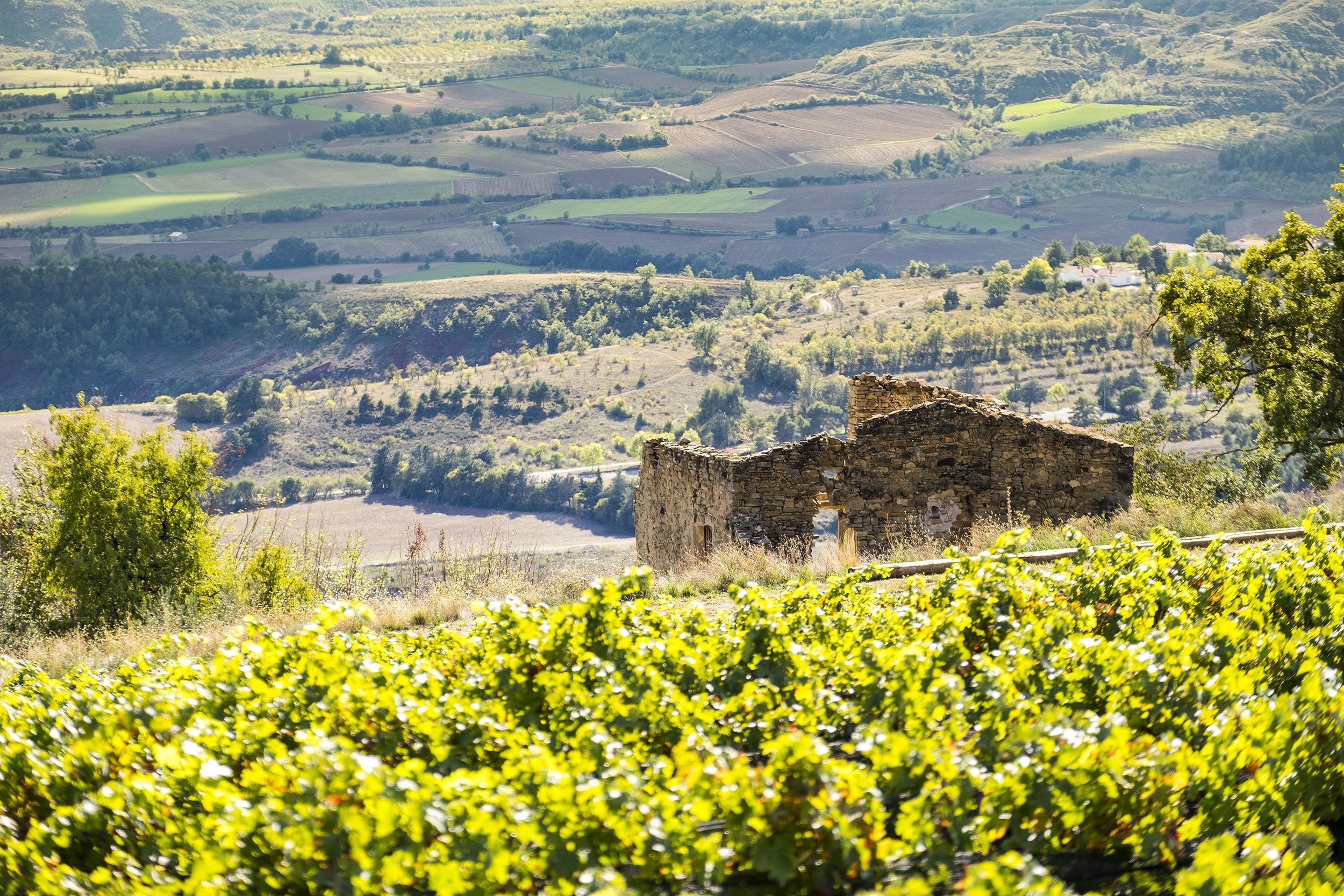FROM THE ROMANESQUE PERIOD TO PRESENT DAY
A unique history
A chapel and a Romanesque village with its stone carved fermenters
on a hill constitute an amazing and magical environment, where wine
legacy is evident.

FROM THE ROMANESQUE PERIOD TO PRESENT DAY
A unique history
A chapel and a Romanesque village with its stone carved fermenters on a hill constitute an amazing and magical environment, where wine legacy is evident.

Origin of the winery
It all began to take shape in Raül Bobet’s mind in the mid-1980s and early 1990s, when, while travelling around the world, he realised that vines and wine were affected by a phenomenon that was still in its infancy and unknown at that time; climate change. His vast experience and technical knowledge led him to undertake a tireless search in the Pyrenees to find the ideal place to plant vines that would permit him to obtain the wines he longed for, which today are so recognisable under his name.
Castell d’Encus began in 2001, when the landscape and the history of the region had a strong personal impact on Raül Bobet. The main estate is located between 800 and 950 metres above sea level, surrounded by woodland and the historical remains of the ancient medieval village of Castell d’Encus. Subsequently, the vineyards planted in Santa Engràcia (1.000m) and Astell (1.230m) have been introduced to the project, which leave us room to play with the limits of freshness and subtlety and create the desired melody of the wine.
In just over 20 years, the acumen and vision of Raül Bobet have turned Castell d’Encus into a benchmark winery where tradition and innovation come together to create high quality wines.
Castilló d’Encús
A tangible past
The ruins of an ancient castle and a monastery belonging to the monks of the Order of St. John of Jerusalem together with a hermitage, dating from the late Romanesque period (12th century), remain on the estate and explain part of our past.
The starting point is the medieval settlement of Castilló d’Encús (10th century), a strategic enclave for the disputes between the two regions of Pallars: Jussà and Sobirà. It was not until the 12th century that it became more important thanks to the transfer of the territories to the monks of the Hospitallers of St. John. This order owned Castilló d’Encús for seven centuries. After the abolition of the manorial regimes (1837) and the disentailment of Madoz (1855), the domains passed to the municipality of Talarn. The village was finally abandoned during the 20th century.
The period under the religious rule of Castilló d’Encús is of special relevance to us. The monks of the Order of Saint John were the first to see the potential of these lands and became the first winegrowers in Conca de Tremp. For this purpose, they dug a set of nine wine vats by hand in the limestone rocks near Castilló d’Encús, where they fermented the wine.
Honesty and esteem for our land and culture drive us to recover the history of Castilló d’Encús and to preserve its historical value. This is why we have revived the use of the medieval wine vats to ferment part of our wines and the cultivation of vines in this area.

Fermentation in rock
Where past and present meet
We currently enjoy the legacy left to us by the Hospitaller monks of the Order of St. John, the first winegrowers in the area. We still have nine stone winepresses dug out of the rock by hand in the 12th century. Of these, six are used to ferment some of our wines, doing what we like best: harmonising history with technology and knowledge. Using wild yeasts and fermentation in stone to highlight the importance of nature, and that’s how we obtain honest and genuine wines that reflect the landscape.






